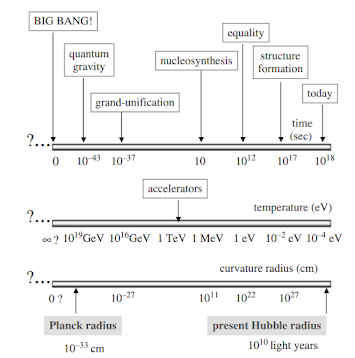The Universe Before the Big Bang
This image shows a diagram of the Big Bang theory, which is the prevailing cosmological model for the observable universe from the earliest known periods through its subsequent large-scale evolution. The diagram shows how the universe has evolved over time, from the initial singularity (the Big Bang itself) to the present day.
The image is divided into four main sections:
- Quantum gravity: This is the period from the Big Bang to about 10^-37 seconds later. During this time, the universe was so hot and dense that the four fundamental forces (gravity, electromagnetism, the strong force, and the weak force) were unified into a single force.
- Nucleosynthesis: This is the period from about 10^-37 seconds to about 10 seconds later. During this time, the universe cooled enough for the fundamental forces to separate, and for subatomic particles to start to form. Nucleosynthesis, the process by which hydrogen atoms fused to form helium atoms, also began during this time.
- Structure formation: This is the period from about 10 seconds to about 10^12 years later. During this time, the universe continued to cool and expand, and matter began to clump together under the force of gravity. Galaxies, stars, and planets formed during this time.
- Today: This is the present day. The universe is still expanding, and new stars and planets are still forming.
The image also includes a number of other details, such as the curvature radius of the universe, the temperature of the universe, and the energy of particles in accelerators.
The Big Bang theory is supported by a wide range of evidence, including the cosmic microwave background radiation, the abundance of light elements in the universe, and the redshift of distant galaxies. However, there are still some aspects of the theory that are not well understood, such as what caused the Big Bang in the first place and what happened before the Big Bang.

Comments
Post a Comment